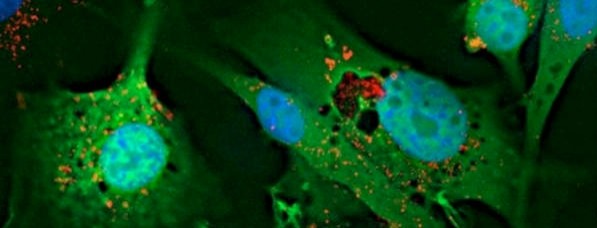
VJOncology: ChemoID trial shows increased survival for glioma patients
UC's Soma Sengupta discusses study results at recent conference
A new collaborative Phase III trial has shown increased survival for patients with recurrent high-grade glioma (HGG), a type of fast-spreading brain tumor.
Soma Sengupta, MD, PhD, was interviewed discussing the results of the trial at the American Association for Cancer Research Meeting 2022 with Pier Paolo Claudio, MD, PhD, the inventor of the ChemoID assay, which is CLIA-certified for glioblastoma. Claudio is a professor at the University of Mississippi, and the two were featured by the Video Journal of Oncology (VJOncology).
The trial examined the effectiveness of a platform called ChemoID, a cancer stem cell test. ChemoID is an actionable tool doctors can use to help determine which treatment is most effective for an individual patient's particular type of tumor.
ChemoID highlights which cancer stem cells are responsible for the tumor coming back or growing, so doctors can then choose a therapy that targets those particular stem cells. The platform was compared against the typical standard where physicians choose what they think will be the best therapy.
"The study was amazing in that most recurrent high grade glioma trials don't show an improvement in survival, but this one showed a three and a half month improvement in survival," said Sengupta, University of Cincinnati associate professor in neurology, director of neuro-oncology clinical trials, associate director of the Brain Tumor Center and a UC Health neuro-oncologist, funded by the Harold C. Schott Endowed Chair in Molecular Therapeutics (Neurosurgery) and the Pam and Tom Mischell Funds.
Once the research is accepted and published, the ChemoID platform can be implemented in clinical pathology laboratories.
Watch the VJOncology interview.
Sengupta and Claudio were also featured in a VJOncology video discussing other potential methods for prolonging the life of HGG patients. Watch the second interview.
Featured photo at top of glioblastoma cells in culture courtesy of National Cancer Institute.
Related Stories
Does the future include AI-powered robots?
January 12, 2026
Big changes are coming in big tech, according to 700WLW. The station turned to Jeffrey Shaffer, director of Lindner College of Business’ Applied AI Lab, for what to expect in the future of generative artificial intelligence.
Hoxworth Blood Center honors MLK with annual blood drive, community partnership, bonus for donors
January 12, 2026
Hoxworth Blood Center, University of Cincinnati, is honoring the legacy of Dr. Martin Luther King Jr. by turning his message of service into action. One powerful way to do that is by donating with Hoxworth on MLK Day and helping save patients at local hospitals.
New CCM apparel available for purchase online
January 12, 2026
Show your school spirit this spring with official CCM apparel! New UC College-Conservatory of Music apparel is available for purchase online. CCM's Spring 2026 apparel can be ordered online now through Feb. 2, 2026. You can preview five wearable items below.
